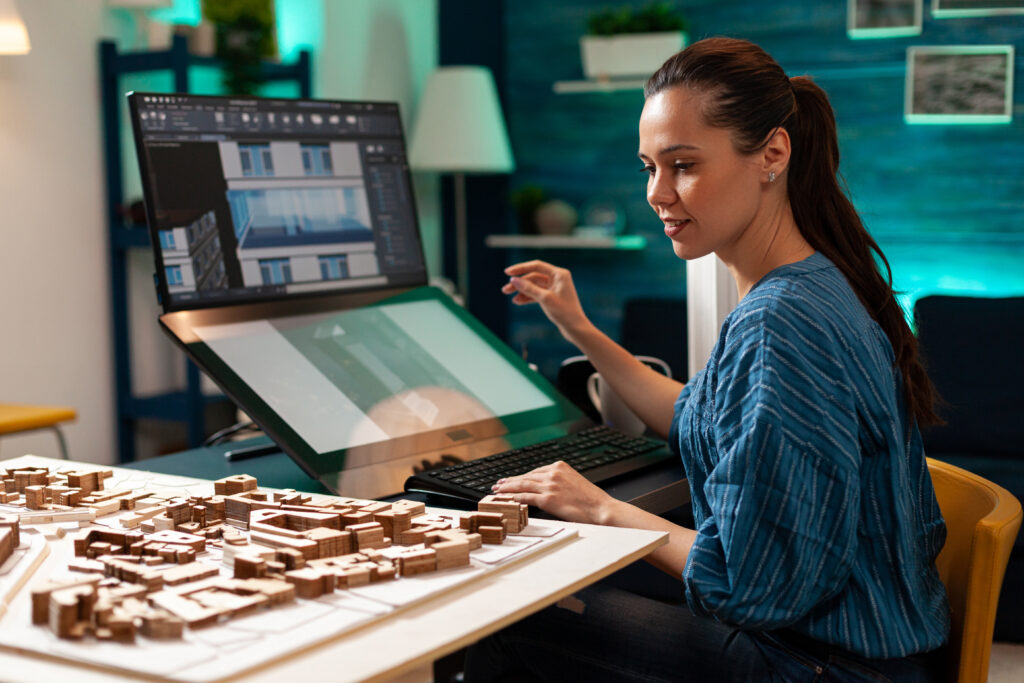Did you know that Architecture has been a part of human civilization since the Neolithic period? In fact, Architecture plays a more prominent role in our society than other industries. According to studyarchitecture.com, it becomes the stage set and background for our existence, rather than just providing shelter. Even when they are just starting to design a building, architects need to consider the health, safety, and welfare of the building’s tenants. It allows people to feel a sense of security and be more connected with their environment.

Importance of Architecture
To understand how architecture started, we must first go back to prehistoric times. People began building stone circles, mud-brick dwellings, and large stone-slab tombs around 11,600 BC.
One of the most well-known prehistoric constructions is Stonehenge in the United Kingdom. The pyramids of ancient Egypt eventually followed in the decades after, as would Byzantine architecture (such as Italy’s Basilica of San Vitale). The Gothic Era throughout the Medieval Ages would eventually lead to additional notable works, such as Paris’ Notre-Dame Cathedral, in the following centuries.
Evolution
The Classical Period, which includes both Roman and Ancient Greek architecture, is perhaps the most well-known period preceding the Renaissance. This era contributed to the introduction of architecture as a means of constructing public spaces (especially in Ancient Greece), as well as the use of materials such as canopies and concrete, and elements such as arches, columns, and stone symmetry.
Those studying architectural design may be particularly interested in more recent movements. The more modern eras of architectural design began in earnest at the start of the 20th century. Among these styles include the Art Deco movement, Expressionism, and Internationalism. Modernist architecture can be defined in general by its emphasis on functionality over aesthetic tendencies.

Postmodern architecture is another recent style. It combines ancient methods with forward-thinking approaches to shapes and designs in projects such as New Orleans’ Piazza d’Italia, Frank Gehry’s Disney Concert Hall in Los Angeles, and New York’s 550 Madison Avenue (originally the AT&T Building).
Discipline

Understanding that architecture is a field that embraces much more than the discipline with the same name is crucial. Additionally, the discipline is not fully constrained to the field. As an example stated by Garry Stevens, many members of the literary community write novels, stories, poetry, and plays. A member of the literary studies discipline does not need to have published a work of fiction in their life, but they must have produced some critical work concerning literature. Likewise, many architectural critics have never designed a building themselves.
Architects should continue to push the boundaries of architecture in new and interesting ways for the sake of the craft.
Beyond the building footprint
Architecture, at its core, exists to create the physical world in which people live. Nevertheless, it’s more than just the constructed environment; it is also a component of our culture. It represents how we see ourselves and the way we see the world.
While the concept of shelter is quite straightforward, the architecture of buildings was originally determined by the environment of a specific place, the materials that were easily available, and the values of the civilization that built them. Think of Terra Amata during the Stone Age, for example, the way shelters were built at that time represents their way of life. They didn’t have a lot of resources that’s why they could only use decayed wood and rocks to secure the perimeter.
As the world got more connected, styles evolved. But even in modern construction, there is still value in honoring cultural differences in the built environment.
The Architect’s Role
Architecture not only has a tremendous impact on society, but it may also have a deep impact on its occupants on a more personal level. Everything from the arrangement of the space to the material finishes can have an impact on the health, mood, and productivity of the occupants.

People who work in well-designed environments take less sick leave, are more focused, and contribute more to their company overall. According to forbes.com, 87% of workers would highly prefer if they are offered good workspace benefits like wellness rooms, sit-stands, and ergonomic seating. Stress levels are higher in sterile, concrete landscapes and unoriginal buildings.
Creating beautiful, awe-inspiring architecture, or simply a thoughtful connection to nature, to combat this helps humans feel more relaxed, joyful, and engaged.
Guided by Technology
Technology also influences architectural practice and its impact on society. Our access to global data, research findings, and the ability to connect instantly with anyone anywhere in the globe have drastically changed the industry.

Architects can collaborate on projects on different continents and draw from a global workforce, providing a diverse range of ideas and cultural backgrounds to impact a project. Technology has also transformed the way we design. For example, computer-aided drafting, modeling, and virtual reality, to mention a few, have made it much easier to bridge the gap between vision and reality, develop distinctive and complex shapes, and present information in previously unseen ways.
Conclusion
Looking into the future of architecture and its impact on society, we anticipate that technology will continue to have a big impact, but we believe it is imperative that we continue to understand human relationships to the modern built environment.
There are numerous methods by which architects can advance their careers and adapt to the shifting demands of today’s society. We simply need to accept the challenge and have faith in our capability to succeed.
